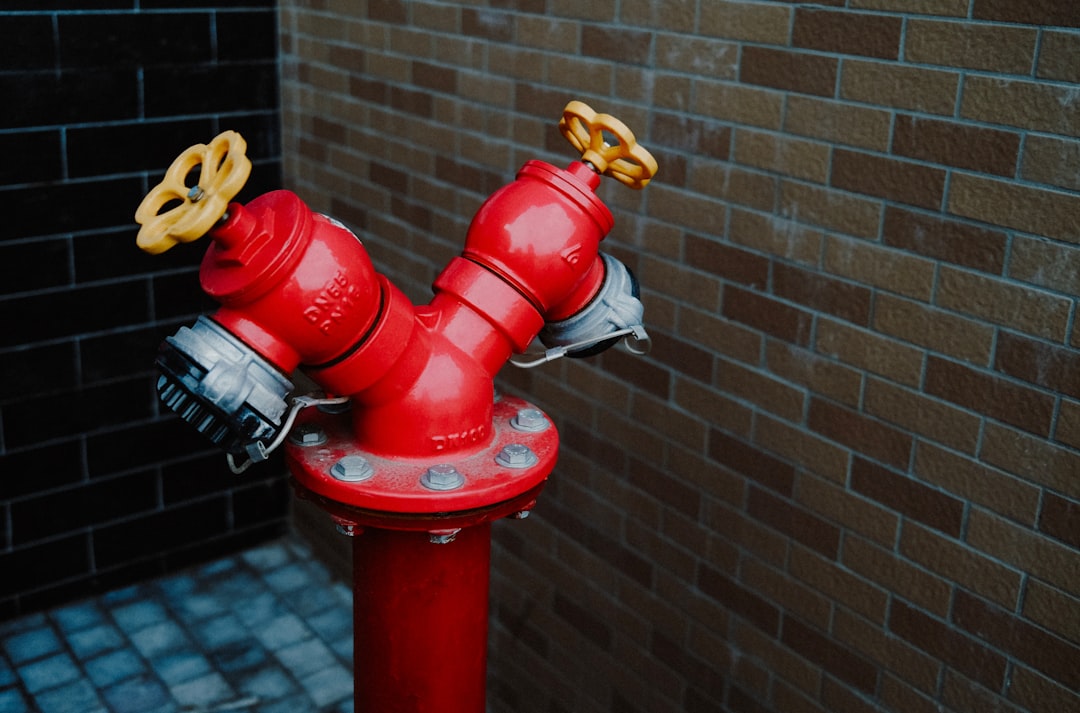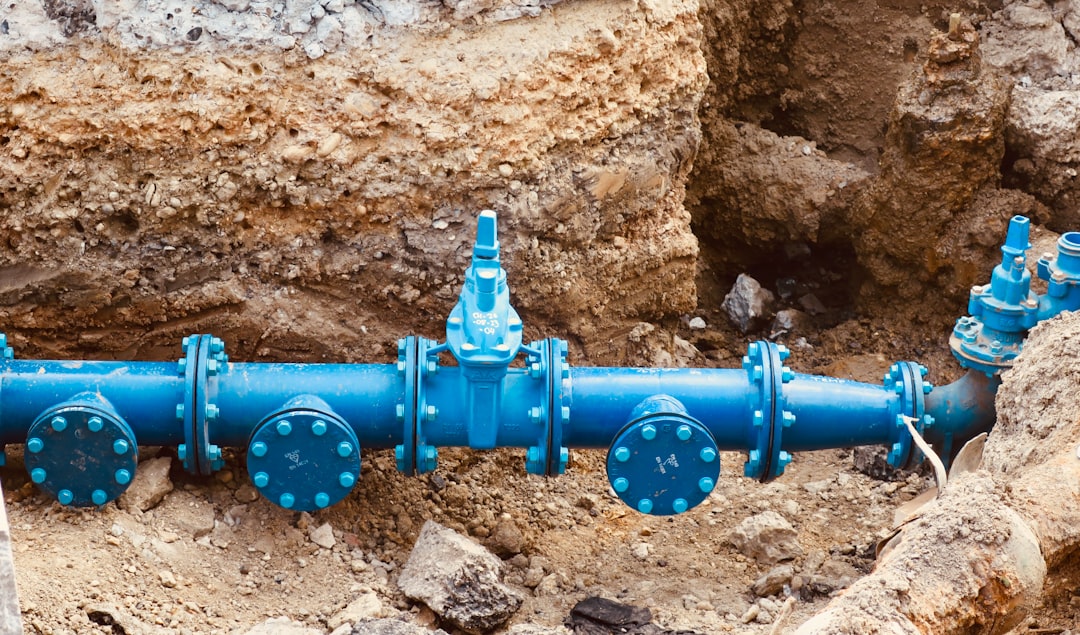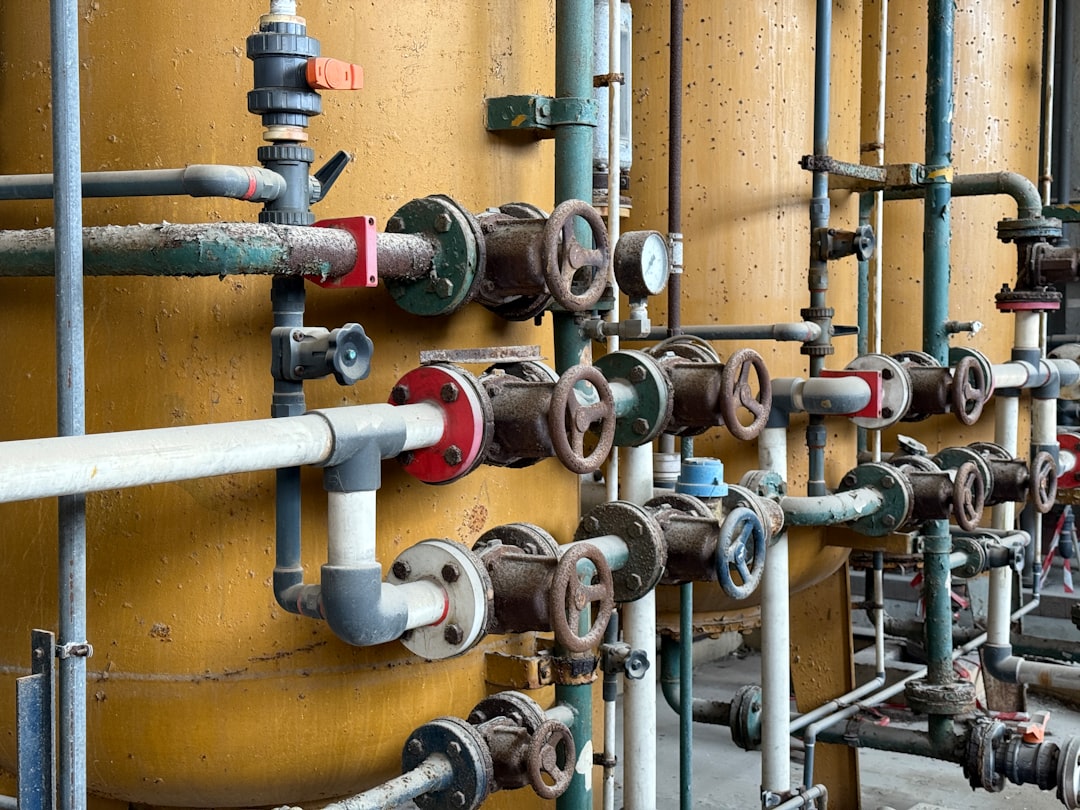

Engage prospects with a scan and streamline customer engagement with FREE QR code marketing tools by Sona – no strings attached!
Create a Free QR CodeFree consultation

No commitment

Engage prospects with a scan and streamline customer engagement with FREE QR code marketing tools by Sona – no strings attached!
Create a Free QR CodeFree consultation

No commitment
Gas plumbing services are essential for residential, commercial, and industrial clients that require secure, compliant, and efficient energy solutions. As expectations grow for rapid response, transparency, and safety reporting, traditional engagement and communication often fall short, causing missed high-value opportunities. Prospects who interact with printed materials frequently remain anonymous, their interest never reaching a CRM, resulting in lost leads and a fragmented sales process.
In a world where digital interactions drive competition, gas plumbing providers face mounting pressure to identify interest and deliver timely, informed follow-up. QR codes have become a valuable bridge for this challenge. By connecting offline actions, from appointments and safety checks to Google reviews, with digital experiences, QR codes provide a frictionless, trackable means to improve customer experience, streamline lead collection, and facilitate real-time outreach, all without complex learning curves or special app requirements.
Well-integrated QR codes, placed on vehicles, equipment tags, and marketing materials, help gas plumbing companies overcome issues like poor visibility into customer intent and slow response times. Using these strategies not only increases accessibility and client trust but also modernizes outdated workflows and drives measurable improvements throughout the service lifecycle. When combined with platforms like Sona QR, every scan becomes a data point that fuels better decisions and faster outcomes.

QR codes play a vital role in boosting accessibility for gas plumbing services by resolving persistent problems such as missed inquiries from walk-by prospects and slow, paper-driven scheduling. They connect physical and digital experiences by instantly sharing emergency contacts, facilitating gas leak reporting, and providing on-demand installation or compliance documents, ensuring important information does not get lost or missed. By placing scannable entry points wherever customers encounter your brand, you make it simple to book, report, or learn within seconds.
Traditional analog processes create friction. Printed brochures go out of date, phone numbers on magnets get lost, and paper forms are frequently misplaced or returned incomplete. QR codes streamline these moments by taking customers directly to mobile-friendly experiences such as booking portals, quote calculators, and digital safety sheets. For fast DIY questionnaires and estimators, use Google Forms QR. With Sona QR, destinations can be dynamic, meaning you can update content without reprinting or redeploying anything.
Adopting QR-powered workflows raises customer satisfaction and ensures valuable leads are promptly collected and routed for follow-up. It also minimizes missed opportunities by replacing phone-tag and manual data entry with instant, trackable digital action. Over time, consistent deployment builds a searchable data layer across your customer base that supports smarter scheduling, targeted upsells, and stronger service-level accountability.

Gas plumbing professionals regularly face urgency, complex regulations, and the potential for lost leads due to slow follow-up and invisible anonymous traffic. QR codes offer a direct, user-friendly method for prospective and existing clients to request urgent repairs, submit inquiries, and access compliance data at every physical touchpoint. When a homeowner sees your van parked on their street, a facility manager reviews a safety sticker on a boiler, or a landlord receives an invoice, a QR code lets them act immediately.
The benefits extend beyond convenience. QR codes standardize how customers enter your process, which means faster triage, fewer misrouted calls, and verifiable audit trails for safety and compliance. Rather than relying on voicemail or staff memory, every scan initiates a structured flow that captures context such as location and service type, simplifying dispatch and documentation.
For gas plumbing providers, common materials such as appointment cards, jobsite signage, boiler room notices, rented equipment labels, and door hangers all benefit from a scannable call to action. QR codes transform these items from static reminders into digital gateways that initiate conversations, capture consented data, and confirm intent.

Gas plumbing providers can harness several QR formats to resolve engagement gaps and unify messaging. Each format supports different workflows, and when managed in a single platform like Sona QR, teams can control, update, and analyze them at scale.
In gas plumbing specifically, dynamic QR codes are the smart default. They allow you to revise destinations when regulations are updated, when seasonal offers change, or when you want to A/B test different landing pages. Static codes have a place for permanent items such as a fixed safety document or a universally valid emergency contact page, but most customer-facing assets benefit from the flexibility and tracking of dynamic codes.
Growth often stalls when high-intent, in-person interactions are not captured in a digital workflow. By embedding QR codes at every major client or asset touchpoint, gas plumbing companies turn previously anonymous interest into actionable leads. The goal is to meet the customer where they are and make it effortless to take the next step, whether that is scheduling, reporting, or learning.
Think beyond traditional brochures. Any surface or document that customers see can act as an onramp to your digital process. The key is to match the QR destination to the context. For example, a vehicle wrap QR code should lead to a compact emergency booking page, while a QR on an invoice should lead to online payments and reviews.
Strategic QR placement transforms real-world engagement into CRM-ready data and future opportunity. When each placement is unique and trackable, you can learn which neighborhoods, building types, or partner channels are producing the best outcomes and invest accordingly.

Not all scans are created equal. The highest performing deployments solve a clear problem in a specific environment. The following examples align with common gas plumbing customer interactions and deliver measurable outcomes.
Every use case addresses common pain points in the gas plumbing field, converting static touchpoints into interactive, measurable engagement. With dynamic codes and Sona QR analytics, teams can iterate messaging, placement, and destination content to drive continuous gains.
Each QR code scan is a signal that reveals intent, context, and urgency. By deploying multiple QR codes across touchpoints, you can automatically segment your audience and trigger tailored follow-up. This approach turns anonymous offline attention into personalized nurture tracks that respect the situation and timeline of each customer.
Segmentation starts with clear distinctions that match your service model. A homeowner scanning from a refrigerator magnet has different needs than a property manager scanning an equipment tag in a boiler room. A weekend emergency scan requires a different response than a weekday quote inquiry. With a platform like Sona QR, you can apply tags and attributes based on placement, time, and device, then sync those segments to your CRM and ad platforms.
For gas plumbing providers, helpful distinctions include homeowners vs. landlords, facility managers vs. contractors, and emergency repair vs. planned maintenance. The more precise your segments, the more relevant your messaging becomes, which leads to better response rates and higher revenue per customer.
QR codes operate as connectors across offline and digital campaigns, enabling real-time engagement and richer data collection. In gas plumbing, where offline presence is significant, QR codes bring measurability to channels that have historically been difficult to attribute. When scan activity is centrally managed through Sona QR, you get both convenience and a single source of truth for performance.
Use QR codes to enhance your broader marketing strategy with placements tailored to your environment. Align every QR destination with the most likely customer intent in that context. A simple rule: the shorter the attention window, the shorter the task. For example, on a moving vehicle, send scanners to an ultra-fast emergency hotline or two-field booking form.
QR codes serve as the offline onramp to your digital marketing engine and unlock a new layer of data collection across channels that were once opaque. With Sona QR, you can manage all codes in one platform, monitor performance in real time, and sync scan data with your CRM and ad accounts for closed-loop attribution.
A well-planned QR initiative delivers value fast. Use the following checklist to design, deploy, and optimize campaigns that convert offline attention into measurable results. This framework applies to emergency services, compliance documentation, and ongoing maintenance programs.
Before you begin, choose one or two high-impact use cases such as emergency booking from vehicles and review collection from invoices. Start small, validate conversion, then expand to additional placements. Consistency is more important than complexity in the early stages.
Pinpoint the main challenge, whether it is slow emergency bookings, low review volume, or outdated compliance access, and define a specific objective. For example, reduce time-to-dispatch for emergency calls by 30 percent or increase maintenance plan sign-ups by 15 percent in one quarter.
Choose between dynamic and static codes based on the use case. In most cases, dynamic codes offer crucial flexibility and tracking, which is especially valuable for emergency flows and compliance content that may change.
Your QR should be trustworthy, easy to see, and paired with a clear call to action. Design choices increase scan rates and reduce confusion in high-stress scenarios.
Place your codes where intent and visibility are highest. Start with a limited set of placements that you can monitor closely, then scale.
Post-launch, measure performance weekly and refine based on data. Optimization turns a good deployment into a high-performing system.
Digital automation ensures leads flow quickly into your CRM and follow-up system. Over time, create playbooks for each use case that include creative files, destinations, and operational scripts so future rollouts are fast and consistent.
Linking scans to revenue is essential to proving marketing ROI and optimizing your funnel. Modern QR analytics reveal who engaged, where they engaged, and what happened next. When you combine this with CRM data, you can see scan-to-booking conversion, lead velocity, and downstream revenue from specific placements.
Many teams stop at counting scans, but that only tells part of the story. The real value comes from connecting scan events to the buyer journey: form fills, consultations, site surveys, quotes, and closed work orders. With Sona QR, each scan captures time, device, location, and source. With Sona.com, that engagement can be linked to pipeline and revenue through account identification and multi-touch attribution.
Benchmarks vary by market, but many gas plumbing firms see 10 to 20 percent scan-to-visit rates on invoices and 3 to 8 percent on vehicles, with conversion to booking dependent on landing page speed and form simplicity. Track your baseline for 30 days, then iterate your CTA and destination to improve outcomes.
As you scale, small improvements compound. Focus on clarity, context, and continuity. The best QR experiences tell people exactly what they will get, match that promise when the page loads, and trigger an immediate follow-up tailored to the situation.
Invest time in training your team. Technicians and office staff are the ambassadors who explain why scanning helps customers. When they introduce QR-enabled flows confidently and consistently, scan rates increase and service feels more modern.
Automation is your friend. When scans populate your CRM with context like asset ID or address, you cut time wasted on callbacks and manual data entry. Over time, the data you collect powers intelligent forecasting, targeted upsells, and better staffing decisions.

Gas plumbing spans multiple service categories, each with its own workflows and documentation needs. QR codes function as a connective layer across these services, giving customers and teams immediate access to the right action and information.
By mapping QR codes to each service type, you ensure that customers get timely guidance while your team receives structured, actionable data. This alignment shortens cycles, reduces errors, and increases customer confidence.
Safety and compliance are non-negotiable. Regulations vary by region, but most jurisdictions require licensed professionals, documented testing, and accessible instructions for gas equipment. QR codes strengthen compliance by making the latest procedures and certifications universally accessible without extra apps.
Consider aligning QR destinations with recognized standards and authorities relevant to your market. Resources may include national fuel gas codes, occupational safety guidelines, and manufacturer documentation. For example, many teams link to local code summaries, carbon monoxide safety checklists, and equipment-specific operating instructions, as well as manufacturer initiatives like A. O. Smith QR. The goal is not to replace formal training or documentation, but to make it easier for stakeholders to find and follow them.
Turning static safety paperwork into digital assets improves accessibility and alignment. It also creates an audit trail that demonstrates responsible practice to regulators, insurers, and customers.
QR codes convert every interaction, whether in-person, on a vehicle, or in printed materials, into measurable engagement. By solving problems like missed leads, poor transparency, and delayed response, QR code adoption positions gas plumbing providers to deliver faster, smarter, and more reliable service. The result is a more accessible customer experience and a stronger foundation for growth.
Gas plumbing services must operate with real-time responsiveness, clear documentation, and rigorous safety. Meanwhile, marketing and sales workflows need to capture and convert high-value interest efficiently. Integrating QR codes throughout your customer and operational lifecycle bridges these gaps, enabling teams to accelerate bookings, collect intent signals, and drive measurable returns. With Sona QR for creation, management, and analytics and Sona.com for attribution and journey insights, providers can connect scans to revenue and make informed decisions at every step.
Start with one high-impact use case, instrument it well, and iterate. As you expand to additional placements and audiences, the data you collect will guide a smarter, safer, and more profitable operation. QR strategies are no longer a novelty in gas plumbing. They are a practical path to better service, stronger compliance, and sustained competitive advantage. Start creating QR codes for free.
QR codes have revolutionized gas plumbing services by transforming traditional communication and documentation into seamless, interactive experiences. Whether it’s enabling instant access to safety guidelines, maintenance records, or customer service resources, QR codes streamline operations and enhance client trust with real-time, mobile-friendly information delivery. Imagine technicians and customers alike scanning codes to unlock critical data on the spot—saving time, reducing errors, and improving service quality.
With Sona QR, you can create dynamic, trackable QR codes tailored for gas plumbing needs, update content instantly without reprinting, and monitor engagement to optimize service delivery. This technology connects every scan to actionable insights, helping you grow your customer base and elevate your operational efficiency. Start for free with Sona QR today and turn every scan into a powerful tool for customer satisfaction and business growth.
The best gas plumbing services can be identified by providers who offer secure, compliant, and efficient solutions with rapid response and transparent communication, often enhanced with modern tools like QR codes for easy booking and safety information.
Gas plumbing service costs vary and can be estimated using digital tools such as quote calculators accessible via QR codes, providing transparent pricing before a technician arrives.
You can schedule an appointment by scanning QR codes placed on service vehicles, brochures, or invoices that link directly to booking portals or repair request forms for fast and easy scheduling.
Signs include emergencies requiring urgent attention, compliance issues, or maintenance needs which can be reported quickly by scanning QR codes on equipment or safety notices to request repairs.
Payments can be made conveniently through secure online portals accessed via QR codes on invoices or receipts, allowing instant payment and review submission.
QR codes connect offline interactions to digital experiences, enabling faster bookings, transparent safety information, real-time updates, and measurable lead tracking to enhance customer experience and operational efficiency.
QR codes are placed on vehicles, equipment tags, invoices, safety signage, door hangers, and marketing materials to capture customer interest and facilitate actions like emergency booking or maintenance scheduling.
Common QR code formats include dynamic web links to booking or information pages, vCard codes for contact saving, pre-filled text or email messages, document and video links, Wi-Fi access codes, and app download links.
Dynamic QR codes allow updating destinations without reprinting materials, support tracking and A/B testing, and provide flexibility to adjust content based on changing regulations or offers.
By using platforms like Sona QR, companies can monitor scan data including time, location, and device, measure conversion rates, sync data with CRMs, and attribute revenue to specific QR placements for continuous optimization.
QR codes provide instant access to gas safety checklists, emergency protocols, operating instructions, certifications, and compliance documents to improve safety and audit readiness.
QR codes on vehicles or door hangers link directly to urgent booking pages, enabling faster dispatch and reducing missed emergency calls.
Yes, QR codes on inspection stickers or equipment tags link to maintenance scheduling portals, helping clients book inspections or upgrade plans easily.
By deploying multiple unique QR codes across touchpoints, companies collect scan data that reveals customer intent and context, enabling segmentation and personalized follow-up through CRM and ad platforms.
Best practices include branding codes with clear calls to action, placing them where customer intent is highest, training staff to promote scanning, using unique codes per asset or location, and tracking performance to optimize campaigns.
QR codes provide instant, up-to-date access to compliance documents, technician credentials, and safety procedures, creating verifiable audit trails and improving regulatory adherence.
They should identify a clear use case and KPI, select appropriate QR code types, design and test codes for usability, deploy them in high-impact locations, and track performance to optimize results.
Use Sona QR's trackable codes to improve customer acquisition and engagement today.
Create Your FREE Trackable QR Code in SecondsJoin results-focused teams combining Sona Platform automation with advanced Google Ads strategies to scale lead generation

Connect your existing CRM

Free Account Enrichment

No setup fees
No commitment required

Free consultation

Get a custom Google Ads roadmap for your business






Launch campaigns that generate qualified leads in 30 days or less.
